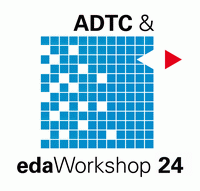Keynote: Semiconductor Technologies & Smart Cities –Technology Push or Application Pull?
Joachim Pelka (Fraunhofer, D)
Abstract
By 2050, 70 percent of the world’s population will live in cities. And, as cities grow and expand their services, the management, operations and governance across the city becomes increasingly complex. To manage this increasing complexity, it becomes necessary to make cities »smart«. ‘Smart Cities’ have been defined as cities that use information and communications technology to make their critical infrastructure and its components and utilities more interactive and efficient. ‘Smart Cities’ are built on ‘smart and intelligent’ solutions and technologies that will lead to the adoption of at least 5 of the 8 following smart parameters – smart energy, smart building, smart mobility, smart healthcare, smart infrastructure, smart technology, smart governance, and smart education & citizens.
Surprisingly, although ‘Smart Cities’ is a hot topic today, a continuous semiconductor value chain for Smart Cities does not exist yet. Whereas smart city planners and operators think and act mainly on a conceptual level and utilize microelectronics off the shelves only, technological opportunities, although available and offered, are not really recognized within this community. In addition, Smart Cities Applications today are more or less singular application solutions, because no unified Smart City approach exists yet.
Nevertheless, ‘Smart Cities’ will be one exciting application of the ‘Internet of Things’ (IoT) with an enormous demand for nanoelectronics and smart systems. A huge increase in markets is expected for the next years described best by the ‘The Trillion Sensor Vision’.
Curriculum Vitae
 Dr. Joachim Pelka is the Managing Director of the business office for the Fraunhofer Group for Microelectronics. He studied electrical engineering, with an emphasis on semiconductor technology, at Berlin’s Technical University and was awarded a doctorate there for his work on semiconductor components. He has been with the Fraunhofer-Gesellschaft since 1983.
Dr. Joachim Pelka is the Managing Director of the business office for the Fraunhofer Group for Microelectronics. He studied electrical engineering, with an emphasis on semiconductor technology, at Berlin’s Technical University and was awarded a doctorate there for his work on semiconductor components. He has been with the Fraunhofer-Gesellschaft since 1983.
Today, following many years in the organization, Dr. Pelka is the Managing Director of the Fraunhofer Group for Microelectronics. As managing director he is responsible for strategic planning and for the coordination of work in the microelectronic institutes of the Fraunhofer-Gesellschaft. In keeping with deepening European integration, Dr. Pelka today functions more and more as a contact person for other European research facilities such as CEA-Leti, CSEM, IMEC and VTT and is a member of the CATRENE Scientific Committee.










